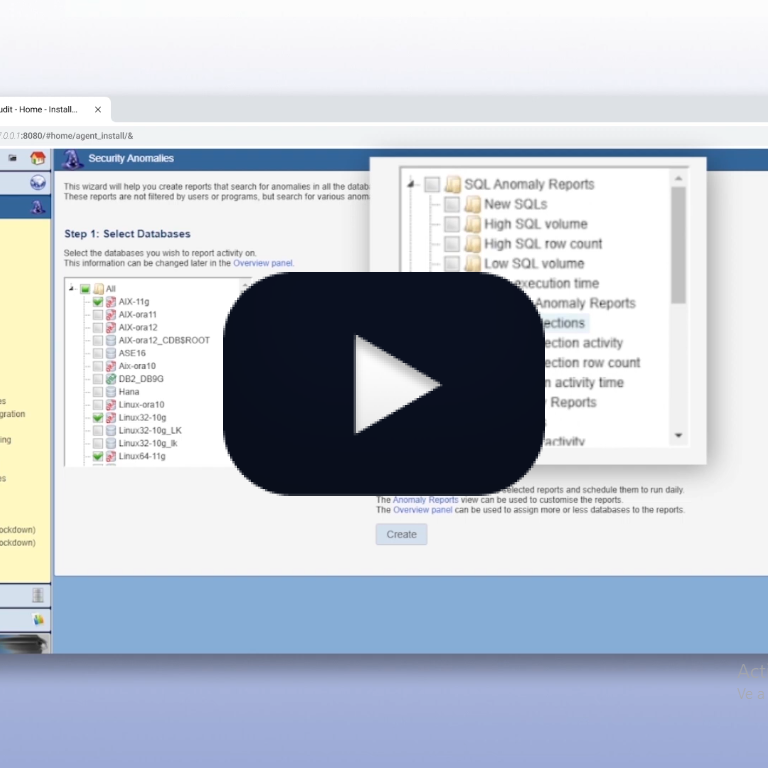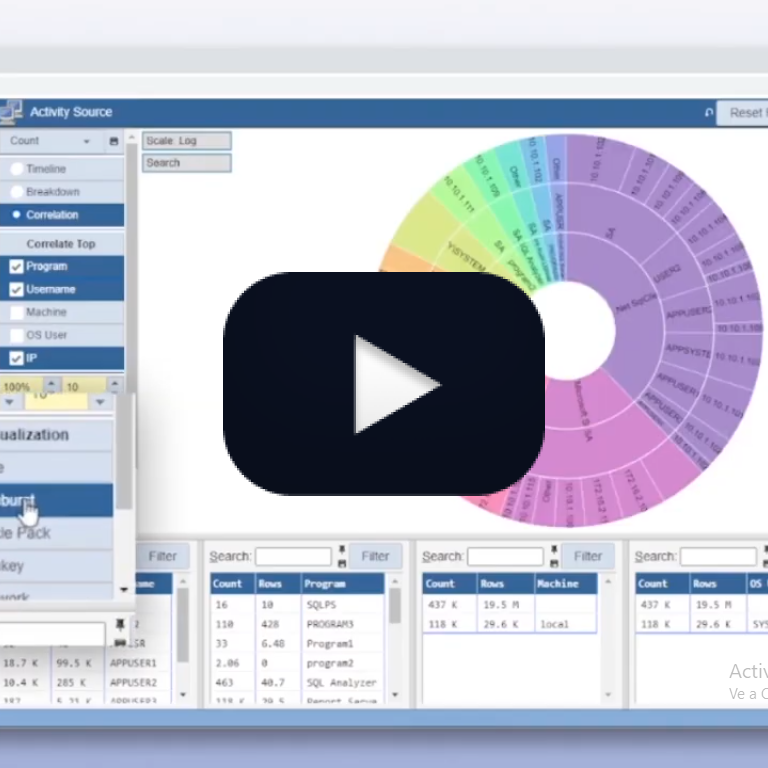Anomaly analysis uses behavioral analysis, helping you save time while expanding your control to vast activity volumes.
These capabilities are made possible by the unique security repository technology in Core Audit. The anomaly analysis engine dynamically creates behavioral profiles based on the activity captured by the security repository, allowing you to compare the present with the past. Contrasting current activity with historical behaviors quickly highlights differences indicative of security problems.
That lets you break the preconception that you can’t control large activity volumes like the database or application. Anomaly analysis empowers you to detect the needle in the haystack to find a single offensive SQL within billions.
How does it work?
Like all IT systems, database activity is repetitive. While values change, patterns persist. While the anomaly analysis engine is capable of more, most analyses center on five aspects:
- New activity. Something seen today but not in the past. Like a new user, a new program, a new SQL, and more.
- High activity volume. Activity that exists both now and in the past but happens now more.
- Time of day – Activity that occurs at a different time now than in the past.
- Combined dimensions. A change in a single dimension can be a new user. A change in multiple dimensions is a new user + IP combination. Even if the user and IP are known, that user may have never used that IP.
- Filters. Focus different anomalies on different areas of interest. Like sensitive tables, the application, particular users, and more. Various subsets of the activity pose distinct risks, but they are also likely to exhibit different behaviors and, therefore, benefit from other types of anomalies.
There are many ways to select the type of anomalies to use. It could be behaviors you expect, patterns you observed in proactive forensics, the Core Audit wizards, the Core Audit Control Guide, or just trial and error. But one of the crucial features of the anomaly engine is that you can immediately test an anomaly and find the results. That makes choosing and tuning the anomalies a relatively simple process.
Benefits
We initially created the anomaly engine to help answer a common customer request. Looking at traditional declarative auditing, some customers said, “I don’t want to tell Core Audit what to report on. I want Core Audit to tell me what to look at.”
As the technology evolved, it helped secure subsets of the activity previously thought impossible to control. For example, to protect the application with its billions of SQLs.
Anomalies have also proven effective in detecting SQL injection and injection attempts. SQL injection, inevitably, causes the application to do something it isn’t supposed to do, thereby creating a new SQL construct that’s easy to identify.
Today, anomalies are a powerful tool to reduce reporting volume, securing huge activity volumes with a relatively low false positive ratio.
Final Thoughts
Anomaly analysis is vital to modern security, allowing you to do more with less. Control higher volumes from more sources with fewer people, less time, and a lower skill set.
Instead of pouring over endless reports, anomalies do much of the heavy lifting, quickly pointing you to potential problems.
While they’re not a magic solution that solves everything, anomalies can and should be a key element in any security strategy.
Talk to us to learn more and experience the Core Audit difference.









